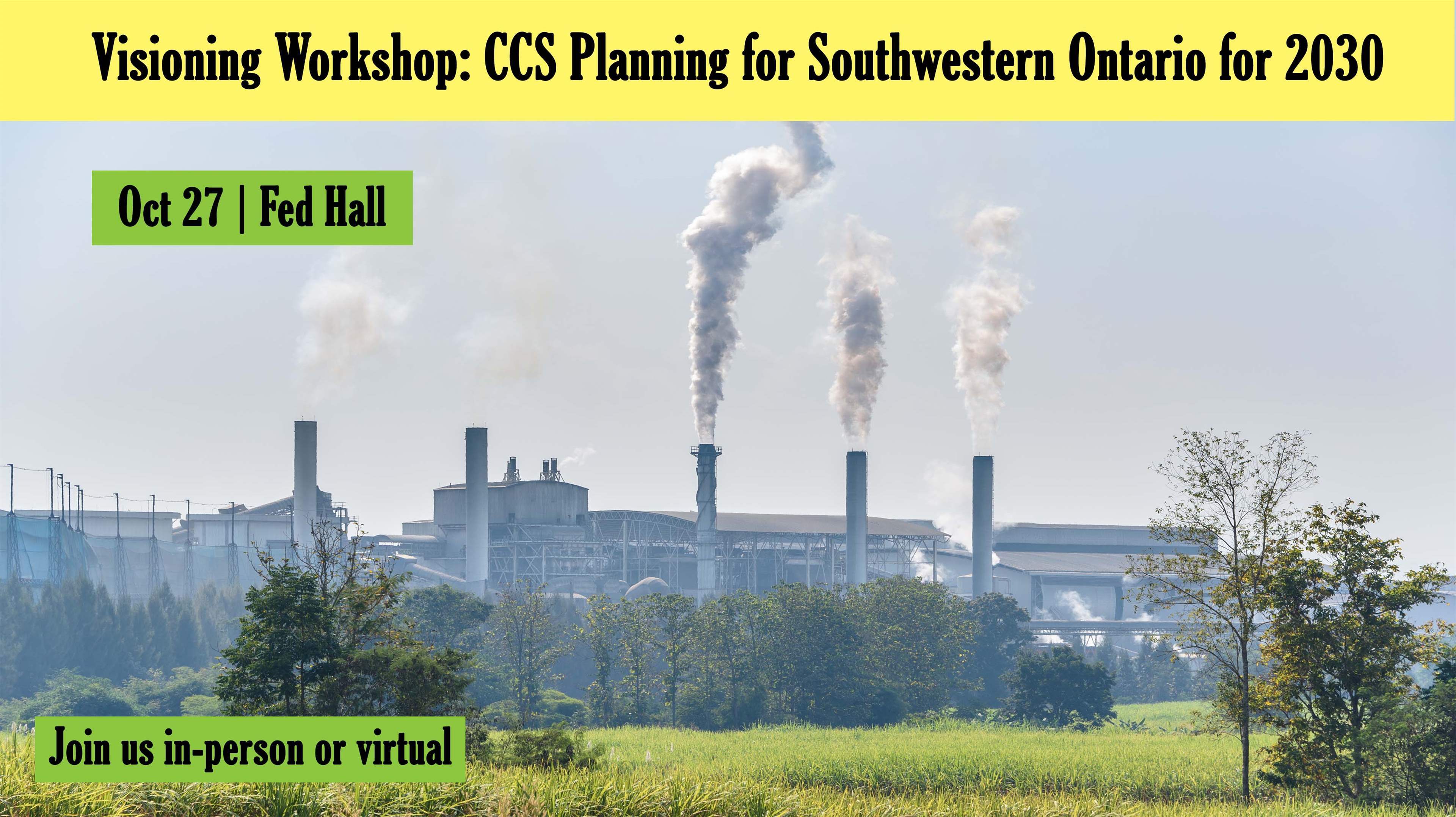BREAK OUT ROOMS SESSIONS
45 minutes discussion, followed by 15 mins plenary during which each moderator summarizes the issues arising; participants are free to choose which discussion session to join.
- Carbon capture (moderator: Eric Croiset)
All the industries shown in the Figure on page 1 produce CO
2 emissions in their flue gases. CO
2 capture from flue gas streams is most frequently achieved by the use of amine-based solvents; amine absorption has been used at both Quest in Alberta and Boundary Dam in Saskatchewan. Other capture technologies may be used including oxy-fuel combustion or other post-combustion processes, many of which have been extensively investigated and tested with initial commercialization underway. In this breakout session, we will focus on the selection issues associated with the various capture technologies.
- Carbon transport (moderator: Roydon Fraser)
Figure 1 illustrates the fact that emitters are widely scattered across SW Ontario CO
2 transmission will necessarily have to consider the use of existing pipelines and rights-of-way to facilitate transmission or rail and highway shipments. This breakout session will consider whether coastal tankers might gather and ship CO
2 from elsewhere in Ontario through the Great Lakes to CCS hubs, which might access the deeper parts of the sedimentary basin beneath SW Ontario.
- Carbon sequestration (moderator: Maurice Dusseault)
Our biggest challenge is to match sequestration sites to CO
2 sources. The sedimentary rocks beneath SW Ontario have been used and abused for 150 years for oil and gas production and there are about 30,000 wells penetrating to various depths; fortunately, the vast majority are quite shallow and not to the depth of CO
2 sequestration (>800 m). The pore volume in these rocks is valuable, not for mineral resources, but for the pore volume itself in that it may allow us to store vast amounts of CO
2 at high pressure – if and only if we seal the wells that penetrate to the sequestration depth. While the few depleted oil and gas fields that are suitable for CO
2 sequestration are relatively well understood by Ontario’s petroleum industry, the “Oil Patch”, the much larger saline aquifers are poorly characterized but likely offer long-term storage exceeding many years of CO
2 production. However, because the brine saturating them is worthless, these have not been studied. So, we now have to understand what might be possible using an ill-defined but local resource and to do it in less than 9 years. This breakout session will focus on the path forward.
The moderators will sum up the general themes of their sessions without attribution of names and/or institutions if requested.


